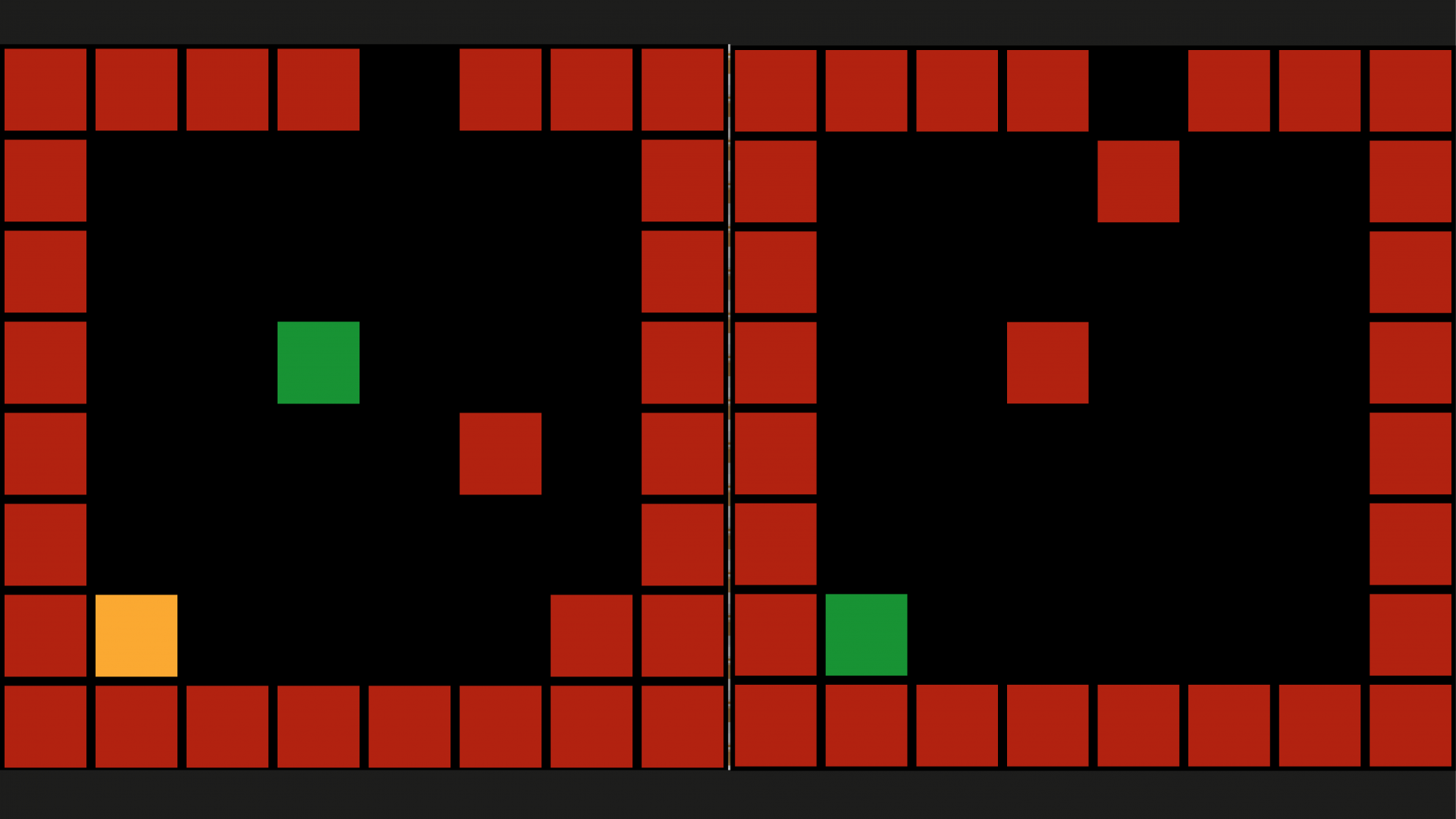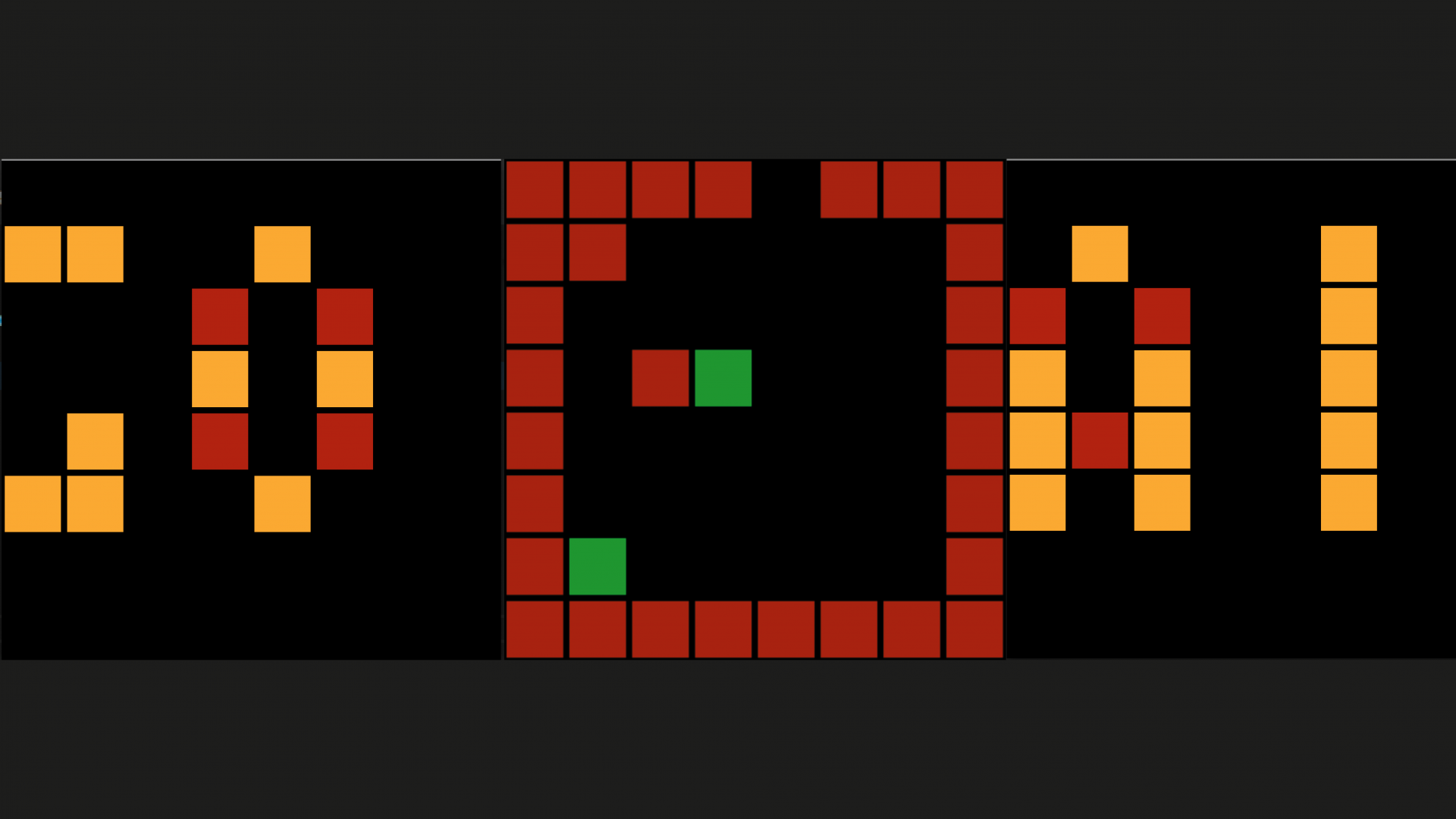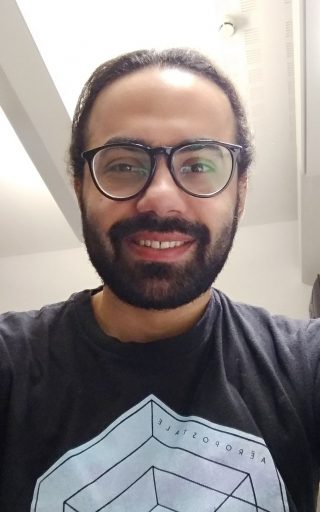Description
In this game, the player assumes the role of a ghost who tries to escape a quantum physics lab without being hit by the photons bouncing around the room. The game elements are: The player (a blinking pixel), bouncing obstacles (red pixels), and an exit door (a dim pixel). The game was made for 8×8 pixel pewpew console.

How to play the game?
The game arena is a 2D grid, the player can move to any position on the grid by using the arrow keys. The game objective is to reach an exit door without colliding with the bouncing pixels. Pressing the X key anytime terminates the game.

How was this game made?
This game was made as part of the student’s coursework for the course titled Quantum Games. The course took place in 2020 at Aalto university. Our team had a quantum physicist and a landscape architect. The idea of using quantum entanglement to catch an invisible object (ghost) was pitched during the first meeting of the course, then the game took its final form through a series of trials and errors.
How is this related to quantum?
The game idea was inspired by the field of study of our quantum physicist, namely, quantum imaging. When utilizing entangled photon pairs, quantum imaging can depict objects with a resolution that can’t be attained by any classical method.
Since the protagonist of our game is an invisible ghost, quantum entanglement can be utilized to reveal its cloaked status. To escape this fate, our ghost can use the concept of quantum-mechanical measurement to disarm the photons from their detection capabilities by localizing (freezing) them in space, just like the idea of wave-function collapse.
The game uses a small quantum circuit written in qiskit to simulate entanglement generation. The circuit was made realistic by introducing an error mechanism. So when the circuit generates entanglement successfully, the player faces two bouncing red pixels, while during the failed attempts he faces a single one.
Tools
Qiskit/MicroQiskitPyGame + pewpew emulator, Adobe illustrator
Team & credits

Hany Khalifa: Quantum physics concepts, qiskit/microqiskit, programming, game design.
Katja Toivola: Visuals, programming, game design.
Downloads
Executable: https://drive.google.com/open?id=1QMjGYjhH-eaTNyPBlG6yW2dLVuT9AyKA
Game source: https://drive.google.com/open?id=1OB92XRHsDbDxyD77ML7zuQKTC3T0gqXh